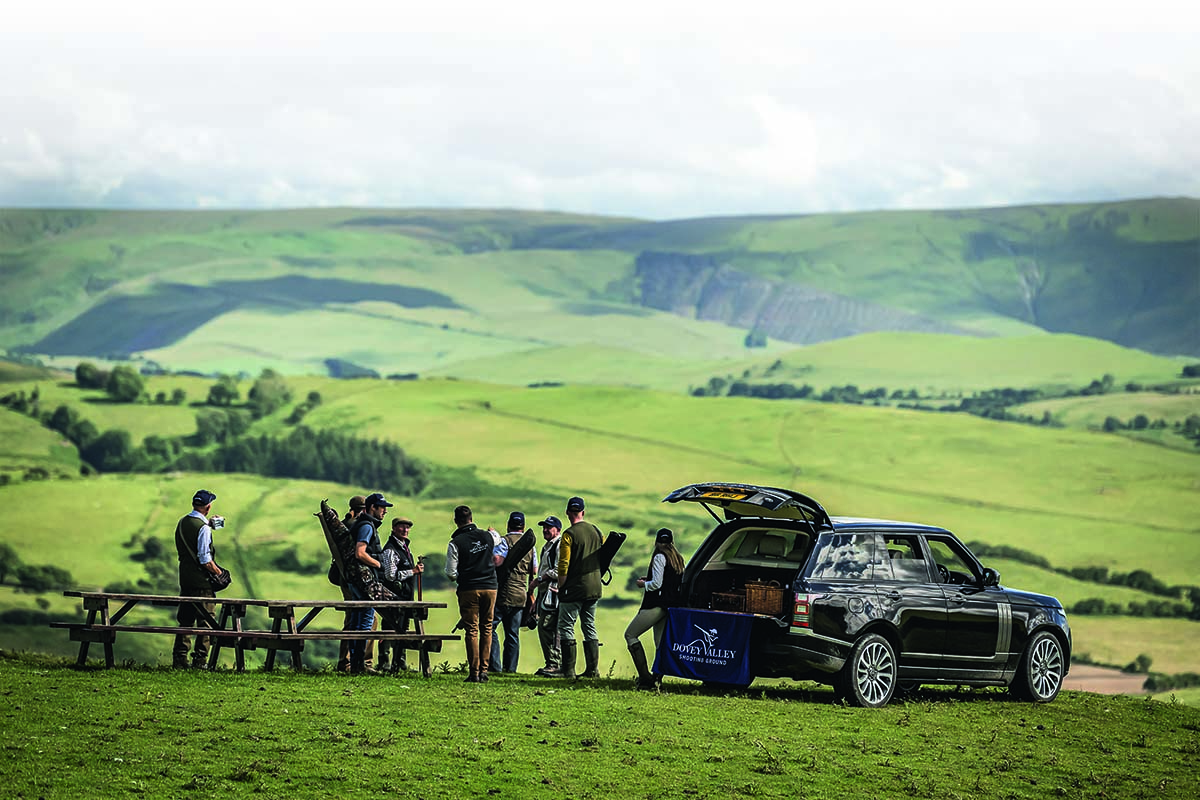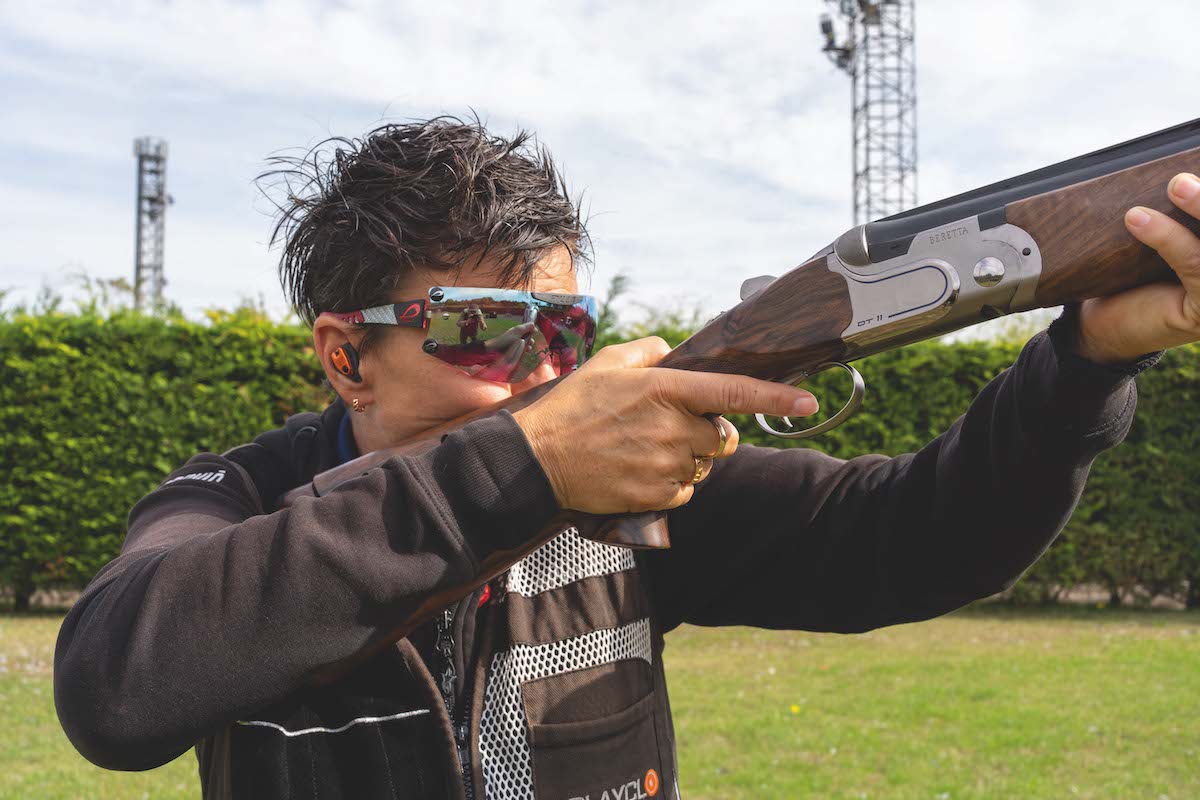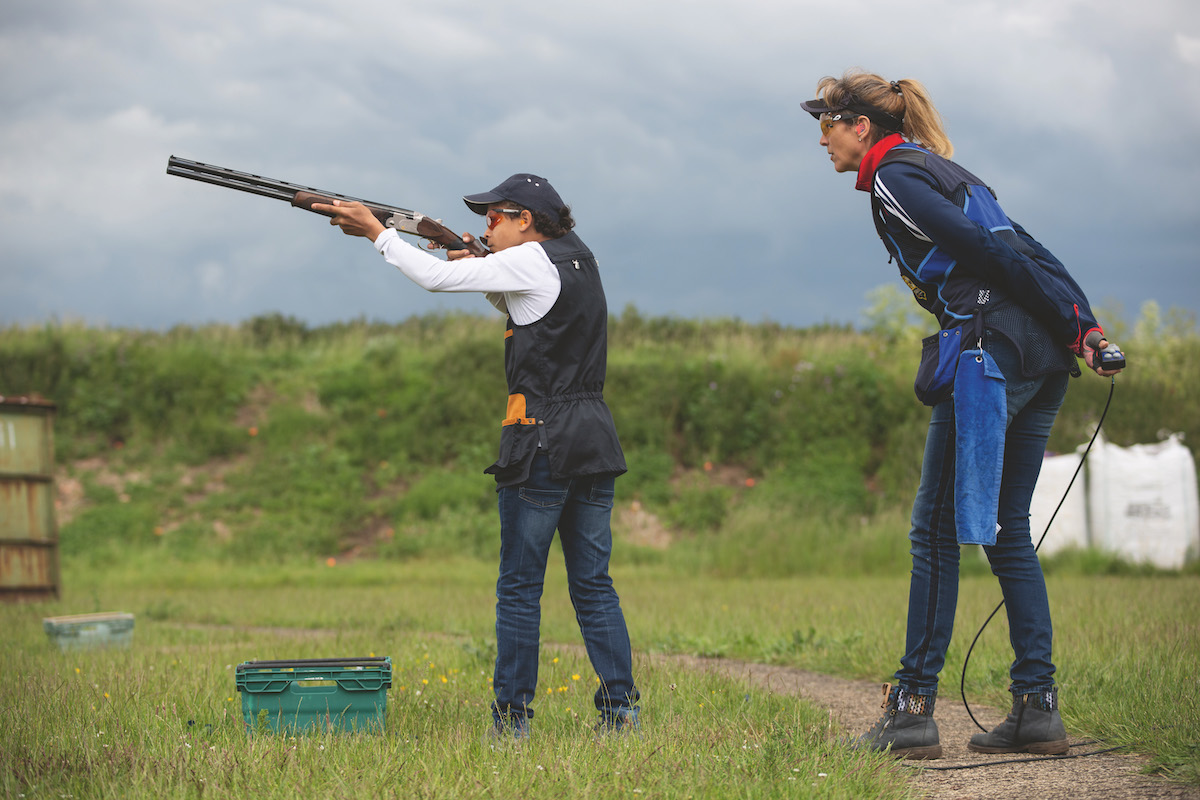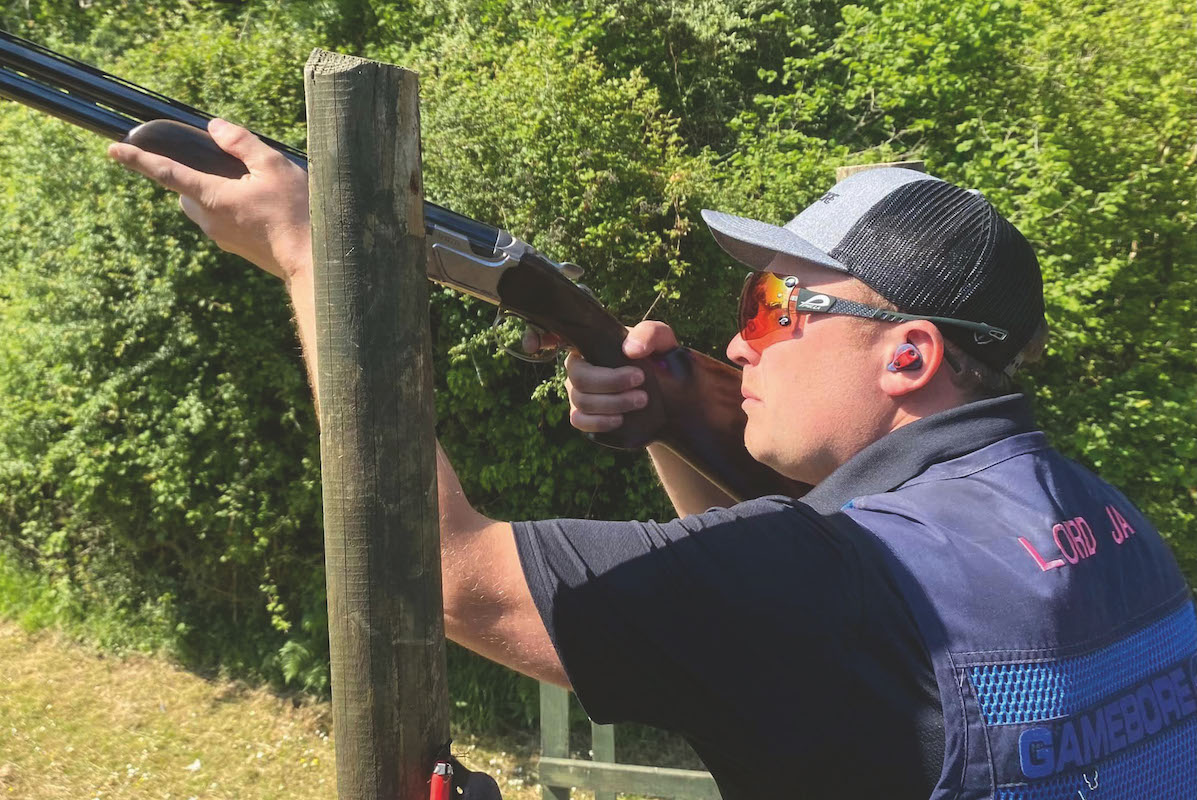Sim game days – how it all began
Malcolm Plant on simulated ‘flocks’ of clays as a cheaper alternative to a driven day or to keep your hand in out of season

Sim days follow the routine of a full driven day, with Guns stopping for elevenses
For about 100 years, artificial aerial targets have been used to practise shotgun shooting. The gentlemen and lady Guns of the early 1900s honed their shooting skills using circular clay targets and, indeed, spherical glass balls to get into the swing of things for pheasants and pigeons. (Read the history of clay pigeon shooting.).)
The Americans invented a training and competition game with crossing targets, which came to be known as Skeet. The British and Europeans had a go at that and still do. Across Europe, the tradition of ‘walking-up’ gamebirds, with dogs in front of the Gun line, led to the development of Trap clay shooting, with the target going away in front of the shooter, to practise on the rapidly receding bird.
In the UK, game shooters were looking for more variation in the flight and presentation of the artificial target. So English Sporting was developed, with clay targets imitating the flight patterns of any bird that was shot for the cooking pot; so the clay disc became a grouse, partridge, pheasant, duck, woodcock, pigeon and also rabbit or hare. With the creative use of terrain, using hills, holes and woodland, an enormous variety of challenging practice and competition could be provided. The Clay Pigeon Shooting Association’s (CPSA) rules for English Sporting spread around the world and catalysed wide interest in Sporting clay shooting.
The French organisation Fédération Internationale de Tirs aux Armes Sportives de Chasse (FITASC, shooting with hunting arms) also introduced another challenging variation of Sporting clays.
In the days when clays were launched from manual traps, the increasing diversity and number of Sporting clay targets at large clay shooting grounds meant that the manpower required for trap operators was becoming a constraint. By the 1980s, the development of affordable automatic clay traps started to encourage the growth of very enjoyable larger Sporting clay layouts.
Smaller clay clubs started to use automatic traps to put on ‘team flushes’ for some fun at the end of the weekly Sporting competition. A line of four or five Guns in shooting cages would be challenged with a steady flow of overhead and high crossing clays from a few auto-traps, with the Guns loading cartridges from their pockets or a cartridge rack on each stand cage. The scorer counted the number of intact clays that escaped the barrage. There were no specific rules on which clay to shoot at and sometimes a lone clay would be obliterated by two or three shots from different Guns.

The targets mimic the flight patterns of gamebirds such as pheasant and partridge
Sim game days
Around this time, the ‘team flush’ concept evolved into a full replica of a day’s activities on a formal game shoot, with the same components of a game day included. So, meet for breakfast or coffee and bacon buns; a briefing on the day’s activities and safety instructions; two clay ‘drives’ at different locations; elevenses, perhaps a sloe gin; another, different clay drive; lunch; one or two further bashes at the clays; tea and ‘performance appraisals’ before departing for home. (Read more on sim shooting here.)
Some of the large shooting estates spotted the opportunities in providing summer sim game days, often on the same or adjacent terrain to where game drives would be run during the autumn and winter.
In the early sim game days I don’t recall any element of competition, instead following the tone and etiquette of the classic game days, where the number of pheasants a Gun has shot was not mentioned in polite company, and certainly the concept of shooting ‘someone else’s bird’ was a definite no-no. But soon the team flush concept crept in, often for the final clay drive, and prizes were awarded for the highest-scoring performance of one group of Guns. Two or three scorers would stand just behind the Gun line and count the number of intact clays that evaded the barrage.
Various formats for the shooting day have developed, depending on the total number of participants taking part and the number of groups of four, eight or 16 Guns invited, together with the requirements of the participants in terms of the volume of clay targets expected and the number of cartridges shot. Some sim days accommodate smaller groups of a dozen or so; anything is possible, from team-building company days or family celebrations right up to the largest days with many groups of eight Guns blazing away.
The basic concept is that each Gun is going to shoot between 100 and 200 cartridges, or more, at a steady but random flow of clay targets over a series of four to six drives, each at a different geographical layout. The shoot provider normally supplies not only the clays but also the cartridges, which are frequently with fairly light shot loads, to ease the impact on the participating shoulders and cheeks.

Sim days are convivial and great entertainment as a shooting alternative
Cartridges
Whereas everyday clay competitions usually allow up to 28g cartridge loads, sim game days often use 21g or 24g cartridges. Shooters almost always use 12 or 20-bore guns and it is very important to keep these two gauges of cartridge separate for safety reasons. (Read best guns for clay shooting.)
Shooting this amount of clays and cartridges gives a basic cost of around £200 per Gun, at average clay-ground prices. So even with good-quality facilities and a full day’s refreshments,the total bill per Gun is clearly going to be a lot less than a day’s pheasant shooting at a decent estate.

It’s best if Guns have some prior experience shooting clays or game
The targets
Any form of gamebird shooting can be reproduced in clays, but safety zones to accommodate the direction of shooting and the fallout areas of broken clays need careful consideration. (Read the shooting safety rules.)
Classic clay drives can include high pheasant, downland high partridge, lowland partridge or ground-hugging grouse. Settling duck and even a few vertical springing teal, way out in front, may appear.
Usually, standard black clays of 110mm diameter are used, but the smaller midi clay with a diameter of 90mm can also be used; although, in certain light conditions, a very high midi clay is sometimes not easy to pick out in a random flush. Bright orange and green clays can help visibility.
One cracking drive I saw years ago was a layout solely of black rabbits, hundreds of them running in all directions on a grassy hillside. I was loading for a client of mine and the Gun line rang with cheers and hoots when someone finally nailed a target after three or four shots had missed.
A more recent innovation, particularly at the big charity shoots, is the use of a lightly armoured model aeroplane with a powerful small engine and radio control, which buzzes about among the clays. The plane is covered in small explosive caps that fire when hit by a cartridge pellet, emitting a bright flash; again accompanied by roars from the Gun line.
The Guns
Sim days are very convivial and great entertainment for a summer’s day, but any participant really needs some experience in shotgun shooting either at clays or game.
I would suggest that a sim day is not the environment for a novice to have their first encounter with clay shooting. It is far too intense for a sensible learning experience; go for a one-to-one with a good coach or have a lesson in a small group first. Sim target flushes are high-intensity activity with no time for a quiet review of what happened with the last target or to understand the diagnosis and remedial actions needed.
A shooting coach, when loading for a client during a high-intensity flush, could only provide relatively broad brush comments during the heat of the action, such as: “Move your feet more to address the target; get the gun mount right and keep your head on the stock; pull ahead twice as much, shoot slightly earlier,” and suchlike. And this advice would only realistically be possible when the coach is ‘stuffing’ cartridges for a client using a single gun. On a double-gun day, where the coach is also very busy receiving and reloading the second gun, such advice would only be sporadic due to the necessities of the task.
On some sim days, the Guns may take it in turns to be loader and shooter. This is really only possible on single gun days, as double-gunning with unpractised pairs of Guns and loaders is potentially heading for gun barrels being clattered together or even a gun being dropped, and so is best avoided.
Helpful fellow Guns and loaders may also fall into the inexperienced coaching trap. “You are behind all the clays,’’ is a piece of observation from a friend, but is not particularly helpful; the useful information is why.
So while the summer sim day is excellent entertainment, very convivial and very good value in comparison with a game day during the winter season, it is not the best learning experience. It certainly helps build up muscle strength and muscle memory, so long as that memory is the right memory for good performance in the field. And the day does keep your feel of high-intensity shooting alive.
The fundamentals
So enjoy the sim and remember the three fundamentals – foot position, gun mount and lead or forward allowance. Get those right and you will be close to hitting a few. And, in the winter, don’t forget that the etiquette of the traditional game day does not involve blazing away at everything that appears in front of you.








